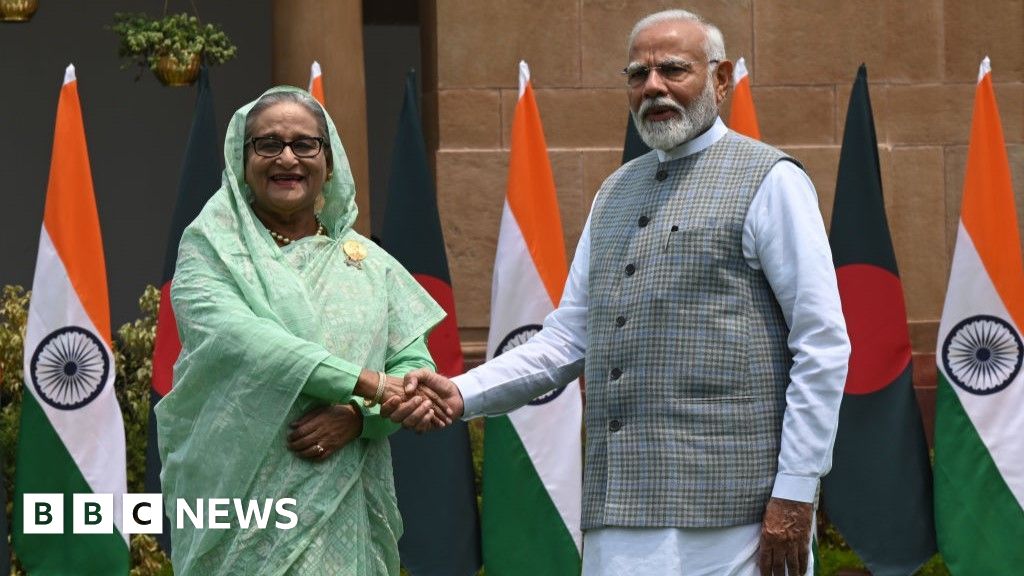The rise of an Armenian church opposition leader
Despite their fraught relationship, Armenia and Azerbaijan are engaged in peace talks. In Armenia, though, many people are not happy with how things are going. In the capital Yerevan, a clergyman has become the face of the Armenian opposition. The post The rise of an Armenian church opposition leader appeared first on The World from PRX.

Armenia and Azerbaijan have been at odds for decades — the two countries have fought multiple wars since the waning days of the Soviet Union.
Despite this fraught relationship, the two countries are deep into peace negotiations, including the demarcation of their common border, and the restarting of diplomatic relations.
In Armenia, many are dissatisfied with the negotiations and their government.
Bagrat Galstanyan, an archbishop from the Armenian Apostolic Church, has become the face of the Armenian opposition. Galstanyan’s rise as a political leader began in Tavush, a region in northern Armenia where he was the chief bishop.
In April, as part of the peace negotiation process, Armenia ceded four villages in the Tavush region to Azerbaijan. Galstanyan opposed this move — he saw it as capitulation to Azerbaijan.
So, he started a movement called “Tavush for the Homeland” — and in the spring, he and his supporters marched south to the capital Yerevan. Tens of thousands of protesters gathered in Yerevan’s Republic Square where Galstanyan called on Prime Minister Nikol Pashinyan to resign.

He said at the protest, “You no longer have any power in Armenia.”
The protesters chanted, “Nikol, go away” and “Nikol is a traitor.”
One of Galstanyan’s top grievances with the government is the way it has negotiated with Azerbaijan.
“Armenia is not negotiating [on] anything with Azerbaijan. There’s no negotiations — Azerbaijan is telling, Armenia is doing. We have to bring real negotiations on the table with the involvement of international mediators and guarantors.”

Galstanyan has organized protests and rallies all around Armenia. In June, things took a turn. During a rally led by Galstanyan, police deployed stun grenades against protesters. More than 100 people were injured.
The government said protesters were attempting to storm the parliament building and that the police’s response was “legal and professional.”
Galstanyan said, “They decided to bombard the people. It was [a] peaceful movement, it was [a] peaceful demonstration, so June 12 is the total delegitimization of this government; they have proven that they have no connection with the people.”
Galstanyan doesn’t mince words when talking about Pashinyan’s government. He’s referred to him as a dictator and as an illegitimate leader, in addition to calling for his resignation.
But Pashinyan is still in power. Peace negotiations with Azerbaijan are ongoing and the protests, led by Galstanyan, have died down.
“This is a national movement with [a] spiritual aspect. The solutions should be political, because this government has lost legitimacy, and they are not representing our national ideas and dreams.”
Galstanyan has said that he would be willing to accept the “nomination” and become prime minister if Pashinyan is removed from office, but that he wouldn’t stay in that position for long. He said that he would form a transitional government and then set up new elections.
“It hasn’t been my desire. I could have been [the] spiritual guarantor of this movement, nothing more. But I understand that there is a huge need, we cannot just lose it. I don’t want to use big words like sacrifice; I’ve just presented myself as a channel, as an agent of change.”
In recent weeks, Galstanyan has been back in Yerevan speaking at rallies. He has an imposing look, a graying beard, church robe and a booming voice.
One rally took place near Saint Anna church in the heart of the city. Attendance was relatively low compared to prior protests, with just a few hundred people. But those there were Galstanyan’s strongest supporters.
One of those staunch supporters is Kate Tairyan, a doctor visiting from Canada, and an active member of the Armenian diaspora.
“What was very special about the archbishop is that he was able to unite people who had very different political views and visions for the country,” Tairyan said. “Everyone understands that where this government is leading our country is not in our best interest.”
Tairyan has been going to Galstanyan’s rallies all summer while visiting Armenia.
“Our country needs crisis management; our country needs a transitional government; and there has to be a process that is transparent and [that] people [can] trust in someone, and I think he is that kind of leader.”
In recent months, leading opposition figures have endorsed Galstanyan’s movement. But many are skeptical and don’t see him as a viable political leader.
Benyamin Poghosyan, who’s with the Applied Policy Research Institute of Armenia, said that Galstanyan faces an uphill battle.
“The issue is that Bagrat Galstanyan is not a politician, he’s a part of Armenian clergy, and this is a problem because even Bagrat Galstanyan is telling that this movement is not purely political, this is a movement to bring back our traditional values, justice, truth, all these are very good things, but I don’t see the movement [as] fully political, and definitely Archbishop Galstanyan is not a politician.”
Poghosyan said that being a political outsider will make it harder for Galstanyan to tackle the key issues that most Armenians care about, such as national security, the peace process with Azerbaijan or economic development.
Trigran Grigorian, the head of the Regional Center for Democracy and Security, said that there’s also the problem of political engagement in Armenia.
“There’s huge political apathy in the country. About 70% of the population doesn’t support either the opposition or the government.”
And because of that, Grigorian said it will be difficult for the archbishop to compete with the sitting government.
Galstanyan’s supporters, though, have embraced his vision, and hope that he remains a force who can shake up Armenian politics.
The post The rise of an Armenian church opposition leader appeared first on The World from PRX.















